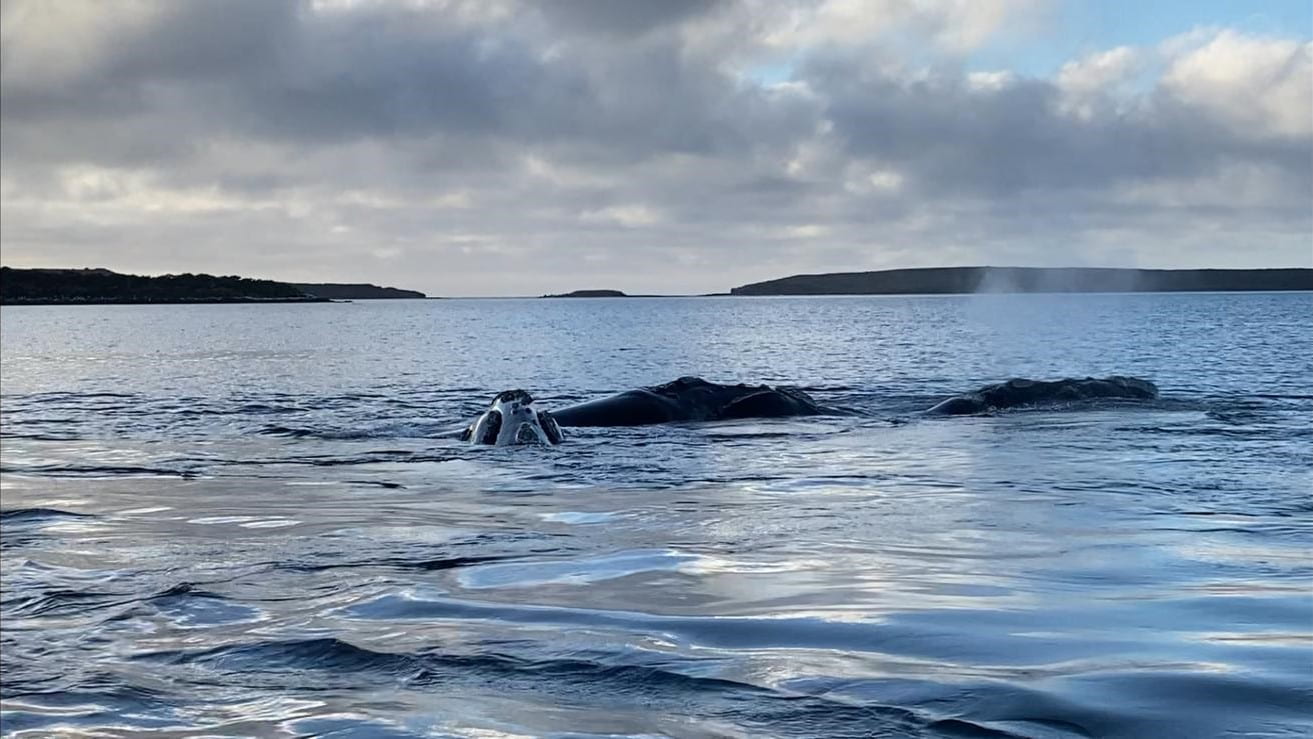This year we arrived in Port Ross in late June, the earliest an expedition has been here since 1998. What we found is what Natalie Patenaude and her colleagues found over 20 years ago: a whole lot of socialising southern right whales.
What we see when southern right whales socialise is a group of whales – perhaps more than 15 – rolling around at the surface. When you’re sitting in a boat watching these groups, what you notice is the random body parts that come up to the surface. It might be a head, or it might be a pectoral fin, or the belly. Once you understand how the whales are oriented in the water, you often realise that they are stroking each other and what looks like cuddling. Sometimes the whales can get boisterous. This can mean breaching, when 50 tonnes or so of whale launched into the air and splash down, often several times in a row. Sometimes one whale, probably the female, will swim off away from the group, with the rest of the whales following. That’s because these groups are most often mating aggregations; there will be a female in the middle, and lots of males rolling around trying to get close to her.
In southern right whales, females only breed once every three years, but males can breed every year. So this means that there’s competition amongst males for the perhaps one third of adult females that are going to breed in a given winter. Across the animal kingdom, males compete for opportunities to breed in different ways. In some species, males might fight for control of some resource that females use, like suitable breeding or feeding habitat. If they control this habitat, they get to mate with the females in the area.
Southern right whale females are bigger than males, and the habitat in the Auckland Islands is abundant and hard to control. So male southern right whales don’t really fight, but instead compete via their sperm. Southern right whales have the largest testicles in the animal kingdom, up to one tonne, and mating will occur multiple times in these socialising groups. The males with the highest quality sperm – perhaps the best swimmers, or the biggest amount – will sire the next generation.
So while we see lots of socialising early in the season, we also see the outcome of last year’s activities: a few small calves with their mothers. As the season progresses Port Ross will fill up with more and more calves, and the number of social groups will decline. Most wintering grounds are either nursery or social grounds, not both, which makes this a unique place where we can study the whole population.
